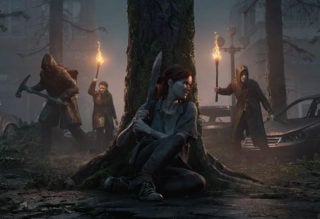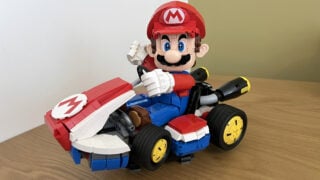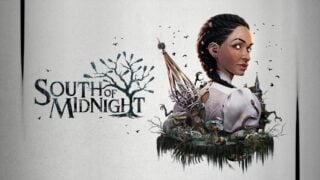Review: The Last of Us 2 is Naughty Dog’s greatest game
The California studio shows off with a mesmerising, yet brutal sequel
- Creative director
- Neil Druckmann
- Key Credits
- Troy Baker (Performance: Joel), Ashley Johnson (Performance: Ellie), Halley Gross (Writer)

It seems fitting that The Last of Us returns only at the end of another console generation. As with the first instalment, the latest in Naughty Dog’s survival horror saga is among the last of its era – a kind of grand finale for the current PlayStation.
Perhaps because of this, it’s showing off a little too much, with a visualisation of a post-apocalyptic America that can feel too big and dramatic. But it’s an extraordinary achievement, technically unmatched and smarter in its player engagement than anything the studio has created before.
Set four years after the events of the first game, main characters Joel and Ellie are part of a flourishing community in Wyoming that’s managed to shelter from ‘the infected’ (zombies created by a brain-invading fungus). Of course, this can’t last, and soon enough a terrible event (no plot spoilers here) triggers a new journey, primarily focused on Ellie.
As with the first game and Naughty Dog’s Uncharted series, what immediately impresses is the detail in the characters. The animation as Ellie converses with those around her is embellished with meaningful glances and subconscious mannerisms, and their incidental chatter as they explore is perfectly pitched in response to the unfolding action. It’s still a little jarring that everyone shares similar laidback speech styles and humour, but the naturalness to their interactions is far above that in most AAA titles.
Even more remarkable is the game’s depiction of a decaying Seattle, where a significant chunk of the story takes place. The crumbling skylines are often stunning, while the interiors of its countless explorable locations are packed with tiny visual flourishes, from cracking shards of glass on the floor, to smudges on windows or dust settled on a guitar.
Together, the character and world design make every building worth exploring, not merely to loot supplies, but to see how it bears witness to life before and after the outbreak. This is a game experienced from the perspective of youth, who only know about the old society from their elders or salvaged cultural artefacts. Through their eyes the everyday trinkets, toys, murals and abandoned photos in a home, café, pet shop or theatre become wonders.
Rather than nostalgia, there’s a sense here of an alien civilisation that deserves pity for its innocence and complacency. At the same time, the whole experience of The Last of Us Part 2 feels more organic than before. This is literally the case with the environments, as human constructions are increasingly subsumed by greenery, but it spreads throughout your interactions with locations too. The rigid and repetitive structures of previous Naughty Dog games are far less obtrusive here.
For the most part, this remains a linear journey, divided into discrete chunks, with only one major section early on that really allows free exploration. Yet the joins between combat, exploration and story scenes are more blurred than before. Tell-tale signs of an upcoming combat section, such as conspicuous cover points are more naturally integrated into the scenery. Roving patrols in some areas, along with a few good old-fashioned jump scares, ensure the pacing doesn’t become predictable.
“Together, the character and world design make every building worth exploring, not merely to loot supplies, but to see how it bears witness to life before and after the outbreak.”
Navigation is more fluid too, with Ellie’s agile frame well suited to quick traversal. A lot of old, well-rehearsed Naughty Dog routines, like boosting up companions, or grabbing onto fragile ledges, are present but used sparingly. Puzzles are more spread out, with a larger array of elements involved, including some neat physics conundrums with ropes and cables. It’s never really taxing, as long as you’re mildly observant, but helps you to feel like you’re existing in a functioning reality.
The core challenge is of course in dealing with hostiles, whether it’s teams of human survivors hunting you down or nests of the hideous infected. Tense stealth is again the main ingredient, as enemies will quickly surround you once they have your position. Staying out of sight and sneaking up on individuals for a quick knife kill is often the safest way to proceed, but you also have recourse to distraction items, a bow for long-range silent assassinations, or Molotov cocktails, mines and a variety of guns for noisier confrontations.

This is all largely familiar, but Part 2 offers enough variety to stop encounters becoming routine. There’s greater complexity in the layouts in many sections, often with more tactical verticality than before or different means of cover, and in outdoor locations it’s now possible to sneak past patrols and escape without incident. The two main rival groups of humans you have to deal with, the Wolves and the Scars, are also tactically distinct prospects, and the infected have new tricks up their fungal coated sleeves.
It all makes for some stunning set pieces. A few of these are tightly choreographed chase sequences. Others, such as a Resident Evil like crawl through a ruined, pitch dark hotel teeming with infected, are more understated yet equally exhilarating. Throwing enemies of different types in together also makes for some wonderfully chaotic and unscripted scenes.
Even so, some of the stealth mechanics are showing their age, and tread a fine line between tension and frustration. Human patrols can be large, and in enclosed spaces it’s easy to get pinned in a corner, unable to track all the lines of sight scanning the area. Progress isn’t necessarily difficult, but isn’t always satisfying either, if you end up relying on the generous checkpoints and trial and error, or wearily give up on the silent approach and reach for the shotgun. Thankfully, later parts of the game encourage more offensive play, and it’s a welcome release.
“But it is a little too long, with too many big moments that fail to stick in the memory as they dissolve into more bloody violence. Personal tales are somewhat swamped by the scale of events, and it loses some of the intimacy of the first game.”
The bigger problem with having so many human enemies is its effect on the game’s narrative themes in relation to violence. The disconnect between the story and the killing is a perennial issue for Naughty Dog, and their attempts to confront it here only serve to highlight it more. The disturbing gurgles as you stab someone in the neck, or the anguished cry as their friend discovers their body, are supposed to add impact to your actions, but are so frequent that they turn into macabre voyeurism.
The story wants us to examine its damaged characters as they look for resolution in anger, with the implication that violence isn’t the answer. But for much of the game it is, and The Last of Us 2 can feel like its revelling in the brutality.

Other aspects of the narrative are fascinating, especially its structure as it takes unexpected turns to gradually reveal the best and worst of humanity in the different sides of a conflict. It’s also commendable how Naughty Dog refuses to rush its plot, giving its characters and scenarios time to breathe.
But it is a little too long, with too many big moments that fail to stick in the memory as they dissolve into more bloody violence. Personal tales are somewhat swamped by the scale of events, and it loses some of the intimacy of the first game.
It seems that Naughty Dog doesn’t know when to stop pushing forward. This ambition has born a game of incredible energy and unprecedented quality, at the cost of some coherency and, according to reports from employees, a punishing work culture.
In every way, The Last of Us 2 is the grand culmination and skilful refinement of all the studio has done in the last decade or so. Hopefully by the last of the next generation, it will have found more effective ways to communicate its themes, and more reasonable ways to bring them to fruition.
Naughty Dog has taken everything to the limit to create The Last of Us 2 – the PS4, its design template, and its staff. In some respects, it’s gone too far, but the results are undeniably spectacular and this is the studio’s best game yet.
- Peerless world and character building
- Inventive and varied action
- A surprising and gripping story
- Too much reliance on extreme violence
























